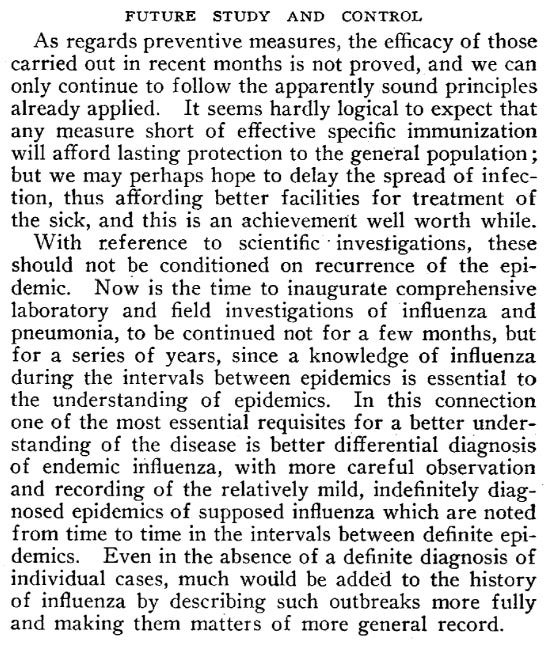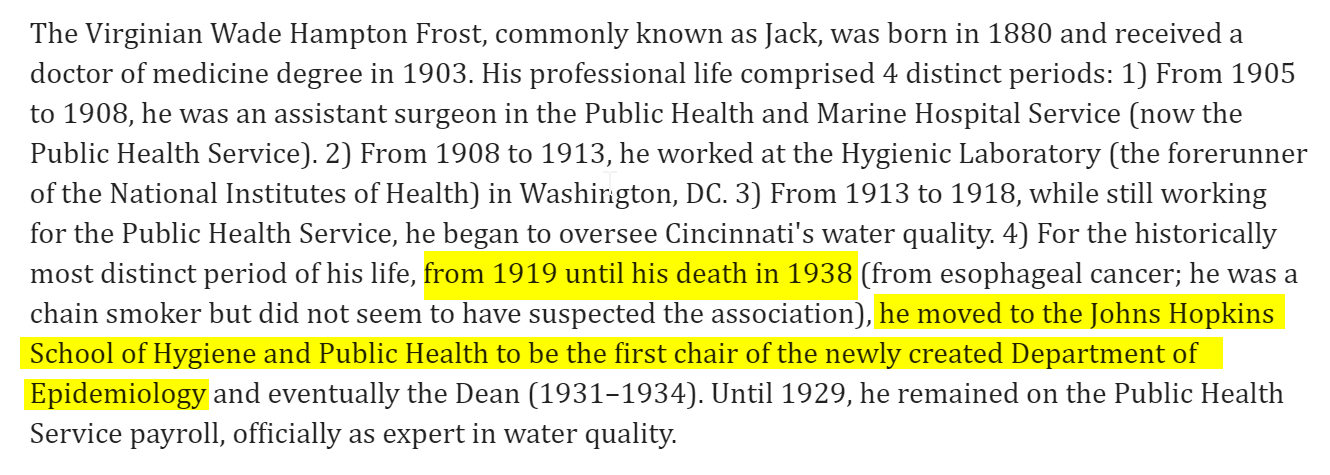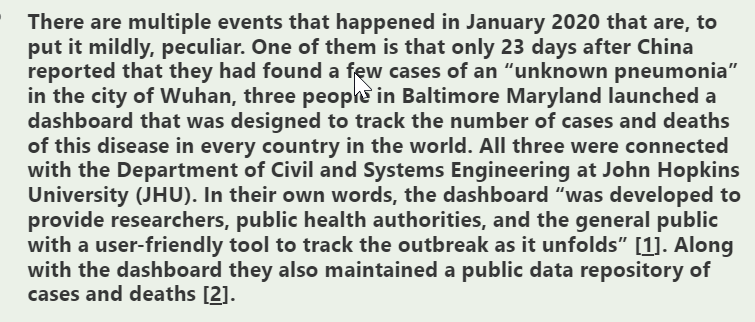Twain was right: “History Doesn't Repeat Itself, but It Often Rhymes”
It's surprising what you find just by looking
Neil Oliver brilliantly eviscerated the pandemic narrative on Tucker Carlson recently.
Watch especially from around 1 hr 46 via this link.
But that wasn’t the purpose of this post. One of the things which Neil claimed was that aspirin toxicity was responsible for a significant proportion of deaths during the “Spanish Flu” pandemic of 1918/9.
I vaguely remember hearing that claim before, but had never looked into it in much depth, so I decided to have a quick peek.
I was quite surprised to see that the theory has been around for quite a while.
The best researched paper making this claim is this 2009 article by Karen Starko in Clinical Infectious Diseases. Here’s the abstract:
The New York Times cited Starko’s paper in this 2009 article, available at Wayback Machine here:
I also recommend this quite recent piece on the subject:
This is a very recent article on “Spanish Flu” by the consistently excellent team at Health Freedom Defense Fund, although in this case I was surprised - given the above - to see no mention of aspirin at all.
Anyway, the main point of this brief article was to shine a light on a man called Wade Hampton Frost, who I had never heard of until I read one of the references Karen Starko gave in her paper on aspirin.
She cited a paper by Frost as support for her assertion that:
the wide variation in mortality rates between cities, some of which were close together, was not explained by climate, population density, preventive measures, or other environmental characteristics. These observations suggest the importance of factors related to location rather than the virus itself.
The Frost paper can be found here. (This article was actually printed in the 2 Aug 1919 edition of JAMA immediately following Milton Rosenau’s detailed description of his failure to evoke transmission of influenza, which can be found here.)
Here’s the part which supports the Starko quote above:
But I found this more interesting.
The themes of the above are:
There is a need to “control spread” which will help afford better facilities for treating the sick: this is an early formulation of “flatten the curve”
Only immunization can provide lasting protection
“Now is the time” to study the influenza phenomenon - for years if necessary. As we will see, Frost got his wish.
So who was Frost? Well, he is apparently considered “the father of modern epidemiology”. This eulogizing article gives a potted career history:
So, he was the first chair of the newly created Department of Epidemiology at John Hopkins University.
John Hopkins University has, of course, been pretty prominent lately, having maintained a dashboard displaying data obtained from “around-the-clock tracking of COVID-19 data from around the world”.
The dashboard was launched in a timeframe some would regard as implausible. As Thomas Verduyn wrote for PANDA recently1:
The dashboard wasn’t just a curio used by the chattering classes to discuss the progression of "the “pandemic” at dinner parties. This article summarises Fauci’s pandemic memoir “On call: A Doctor's Journey in Public Service”, and repeats a plethora of outlandish claims about the covid era.
In relation to JHU, one point of particular interest was this:
So from just a few weeks after the novel disease had been identified, Fauci and “top officials” started to rely on a dashboard which made a huge number of implausible claims about data availability and accuracy from around the world?
Finally, it’s worth noting that on 18 October 2019 John Hopkins University hosted the infamous tabletop training pandemic exercise they called “Event 201”.
I regularly come across people who basically think Event 201 never happened. These tend to be the same sort of people who think that Klaus Schwab is a mythical character out of a novel.
But Event 201 really did happen. The website is here. JHU seem very proud of it.
Talking of Schwab, note that for Event 201, JHU partnered with the WEF, as well as with our friends at the Bill and Melinda Gates Foundation.
Oh, and the tabletop exercise featured a mock novel coronavirus. What are the chances!
JHU, obviously cogniscent of the implications of the above, issued a statement claiming that it was all a coincidence. The statement is dated 24 January 2020.
It reads:
January 24, 2020 – In October 2019, the Johns Hopkins Center for Health Security hosted a pandemic tabletop exercise called Event 201 with partners, the World Economic Forum and the Bill & Melinda Gates Foundation. Recently, the Center for Health Security has received questions about whether that pandemic exercise predicted the current novel coronavirus outbreak in China. To be clear, the Center for Health Security and partners did not make a prediction during our tabletop exercise. For the scenario, we modeled a fictional coronavirus pandemic, but we explicitly stated that it was not a prediction. Instead, the exercise served to highlight preparedness and response challenges that would likely arise in a very severe pandemic. We are not now predicting that the nCoV-2019 outbreak will kill 65 million people. Although our tabletop exercise included a mock novel coronavirus, the inputs we used for modeling the potential impact of that fictional virus are not similar to nCoV-2019.
I was curious as to when that statement really appeared, so checked on Wayback Machine.
Well, that’s odd. The statement is dated January 2020 but the first snapshot uploaded to WBM was at 08:04:20 on December 3rd, 2023.
There are actually 4 snapshots uploaded in Dec 2023, then 5 further uploads in 2024 so far. But none at all in the nearly 4 years following the purported date of that statement?
To me:
It’s worth reading the actual recommendations which came out of Event 201. Those contained within section 7 in particular appeared to be rather enthusiastically implemented, commencing just a few months later:
Postscript:
pointed out in the comments that had spotted a rebuttal to Starko’s thesis by Noymer et al based on data on Spanish Flu mortality in India.That can be found here.
Starko then submitted a response to Noymer et al which can be found here.
I personally don't regard the Noymer observations as falsifying the claim that aspirin toxicity was responsible for a significant chunk of death in the USA (and other Westernised nations).
It is clear from recent events that a climate of unalloyed fear and hysteria will manifest in harmful disruptions of a variety of types depending on the prevailing circumstances, so excess deaths in India could well have had a different cause altogether - perhaps the hysterical overconsumption of some other medicine, or the disruption of food supply chains at a time when the population would have been hyper-vulnerable to such.
Moreover, (as affirmed by recent events) politicians will not hesitate to ascribe any catastrophic policies for which they are responsible to a “pandemic” if they can.
Anyway, as















Quick note: To say the use of aspirin "contributed" or could have contributed is fair to theorize about however, as it is with the EMF as cause for Spanish Flu theory, the evidence for aspirin being a major cause is weak and omits the fact that many, many countries did not partake of a mass aspirin campaign yet did have mass death that was (falsely) attributed to the Spanish Flu.
While it's true that poison pills and poisonous injections will "contribute" to the mass death those pale in comparison to the chemical and gas warfare that was ongoing from 1915-1918, the mass famine and the apocalyptic destruction experienced due to WW1.
This is a recurring problem with "our side" in that they might look for a "single cause" such as 5G (which is nasty), or the vaxx (which is toxic) rather than examining the totality of the social and economic conditions as well as the geopolitical context.
There are many theories
We know it wasn’t a virus (no isolation)
We know it didn’t transmit between humans
https://www.ggarchives.com/Influenza/TheRosenauExperiment-1918-1919.html
So this pandemic thing is quite the fairytale